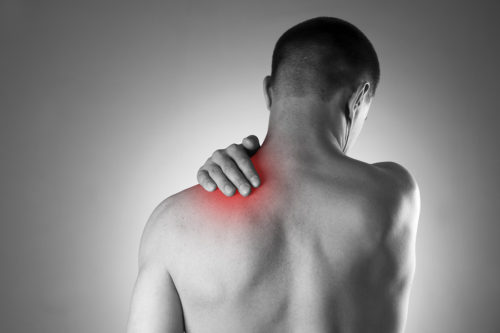Dolores Freeman, 60, had unbearable pain in her right shoulder last year that was driving her nuts. “I’d feel pain in my right arm and shoulder with practically every move I’d make. Thank God I went to see an orthopedic doctor last November, and he diagnosed the pain as a complete rotator cuff tear. Well, I had rotator cuff surgery in early December, and now that unbearable pain is just a bad memory!”
Dolores is just one of 200,000 Americans who requires shoulder surgery each year to repair a torn rotator cuff. Most of these types of injuries are related to the wear and tear of age. The others who tear their rotator cuff are typically athletes who throw, or people who do heavy manual labor. Some studies state that the prevalence of rotator cuff tears may exceed some 50 percent of people over age 65.
What is a rotator cuff tear?
The rotator cuff refers to a group of four tendons and muscles that form a “cuff” to stabilize the shoulder joint and keep the arm in the shoulder socket, while it moves all around. The shoulder joint is held stable because of the rotator cuff, but it is also pretty weak.
Causes
Aging and doing things repetitively, activities that cause you to move the shoulder a lot such as baseball, tennis, swimming, weightlifting, and football can strain the joint and cause swelling and tears in the tendons.
As we get older, reduced blood supply to the rotator cuff tendons means that any damage to it will not repair itself as it should, and bone spurs (bony overgrowths) can also weaken the tendon and lead to tears.
Acute injuries to the shoulder caused by falling to the ground, using an arm to keep from falling, or lifting heavy items can also tear the rotator cuff.
A family history of rotator cuff tears can also make someone predisposed genetically to the condition.
Symptoms
- Dull ache in the shoulder/arm especially when you lie on the affected arm
- Pain with movement
- Weakness or loss of motion
- Pain or discomfort when you raise your arm to comb your hair or try to reach behind your back
Complications
Those who have been diagnosed with a rotator cuff tear and who fail to seek treatment are risking a more progressive degeneration of the shoulder joint.
Treatments
In about 50% of patients, nonsurgical treatment relieves pain and improves function in the shoulder. Shoulder strength, however, does not usually improve without surgery. Depending on the type of tear, a doctor may first prescribe a conservative treatment of rest, ice and non-steroidal anti-inflammatory medication like ibuprofen (Motrin or Advil) or naproxen (Aleve) to reduce pain and swelling.
You might also be cautioned not to use the affected arm as much.
Physical therapy is commonly prescribed for a tear, and many doctors will typically recommend that a patient try it for a dedicated four to six weeks to strengthen mobility.
A steroid injection might also be mentioned as a temporary fix for rotator cuff pain. Keep in mind, however, an injection is only a temporary remedy and is certainly not a long-term solution towards repairing the actual tear. Shots can also contribute to the weakening of the tendons.
If you go the surgery route, most rotator cuff repairs can be done on an outpatient basis which means no hospital stay. An orthopedic surgeon will discuss the best procedure for your particular needs. The most common surgical options include an open repair, which involves a traditional surgical incision. This method is used for large or complex tears.
The next most common surgical repair for a torn rotator cuff is an arthroscopic one, which is less invasive. The surgical procedure involves a smaller incision in which the surgeon inserts a small camera (an arthroscope) into the shoulder joint allowing him/her to see the shoulder anatomy and to guide surgical instruments.
The surgeries are usually done under general anesthesia where a patient is put to sleep. An operation can also be done with a regional block that allows a patient to remain awake while their affected arm and shoulder are numb. Both methods of anesthesia can be discussed with a physician prior to having the surgical procedure.
Rotator cuff surgery involves an extensive rehabilitation period. This consists of the immobilization of the shoulder joint by the use of a sling. Physical therapy will be a crucial part of your recovery. Depending on your doctor, physical therapy can begin as early as a day, to six weeks post-surgery depending on your surgeon’s preference. Frequent physical therapy visits are recommended to limit shoulder stiffness. The ultimate goal of physical therapy is to regain all motion and strength to the shoulder/arm and to return to pain-free activity.
Recovery outcome
No matter which rotator cuff surgery you have, you will need time to recover. You should expect to be in a sling for an average of about 6 weeks, but each situation is different. The sling protects your shoulder and gives your rotator cuff time to heal. Operating a motor vehicle will also be off-limits for about a month but again, be sure to follow your doctor’s recommendations.
Most people don’t get instant pain relief from surgery. It may take a few months before the shoulder pain entirely subsides. Until then, a doctor may prescribe doctor over-the-counter pain relievers or opioid painkillers that can lead to addiction. If your doctor prescribes an opioid only take them as directed and stop as soon as the pain gets tolerable.
While recovery from rotator cuff surgery will be challenging, most folks are back to their regular grind within 6 months or so.
